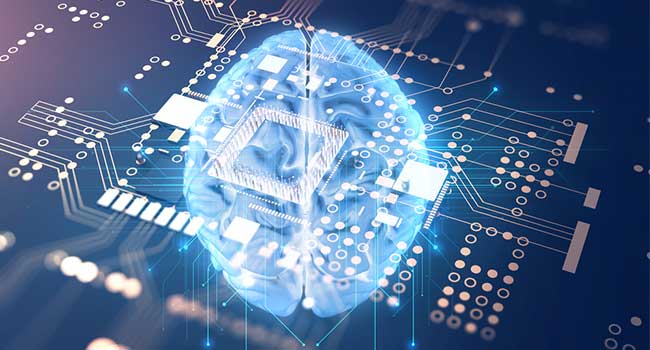
Always Surrounded
Technology counts on AI to authenticate and identify people
- By Brian Baker
- May 24, 2021
Not long ago, artificial intelligence was viewed as science fiction. Today, it routinely makes our lives more secure and convenient. AI surrounds us in our everyday lives. Online entertainment providers use it to suggest movies, TV shows and music we might enjoy. Retailers try to influence our current buying decisions based on previous purchases. Chatbots help us make appointments with service providers.
The security industry also deploys artificial intelligence in many ways. Facial recognition counts on AI to authenticate and identify people by the shapes of their faces and features. Robots and drones patrol perimeters looking for anomalies, leaving human officers free to handle other potential threats and events. AI-based software checks feeds from central video monitoring stations to filter out false alarms.
Diving a Little Deeper into the Technology
In recent years, the use of artificial intelligence and its subsets, machine learning and deep learning, have increased exponentially. AI technology enables computers to mimic human intelligence using logic based on if-then rules and decision trees. Statistic techniques used in machine learning allows computers to improve at tasks with experience. Deep learning enables networks to train themselves to perform tasks such as speech and image recognition. There are two main ways of working with these technologies – rule-based algorithms and neural networks.
Rule-based algorithms have limitations. Even the most experienced computer engineer can't prepare for all potential situations that might arise within a camera's field of view or an employee arrives at a building entrance with his face covered with a mask and goggles. As a result, these algorithms offer reduced accuracy.
While it's not accurate to say neural networks work like a human brain, they are inspired by it. Neural-node networks are computing systems that learn to perform tasks by considering examples rather than being programmed with task-specific rules. The machine-learning model memorizes its training data an makes predictions based on specific sets of situations.
For instance, it only recognizes human activity if it matches previous examples. That's why training software to identify human beings or vehicles reliably requires exposing the neural network to millions of images.
The network makes predictions about each presented image and is corrected by humans when it makes mistakes. Neural nodes are layered, each analyzing an image element. A prediction is made once the image passes through and is processed by the network.
Improving Accuracy
Network accuracy improves until it outperforms other methods. Over time, the network will reliably predict the presence of humans and vehicles or whatever else it is trained to recognize. What makes these networks so powerful is their ability to generalize concepts they've learned and then apply them to images they never before have seen.
An example I often use is that of a cat. Ask 10 people to think of a feline and most likely, you'll get 10 different answers based on distinct breeds, sizes, fur colors and many other features. However, all would recognize each person's visualization as some type of a cat.
Let's take a look at an everyday use of deep learning to understand better how it impacts the security industry. Video monitoring center operators are exposed to hundreds or thousands of alarm images per shift. Blowing leaves, lighting changes or a spider building a web in front of a camera lens may trigger a false alarm. Traditionally, 95% or more of incoming alarms are false. Today's deep learning networks can eliminate up to 99% of false alarms.
Improved security is one result. By reducing the false alarm noise, operators are less likely to miss genuine alerts. Operators' ability to focus on potentially criminal activity reduces response time if law enforcement or security guards must be dispatched.
Monitoring cameras for hours is a demanding job, made more so by dealing with false alarms. False alarm reduction software improves employee morale, reducing turnover in the process. By focusing on true alarms, operators become more productive, enabling a station to add more cameras or new customers without hiring new employees.
The cloud-based AI software requires no hardware devices to be installed at an end-user's site. Future upgrades are managed remotely by the service provider.
Predicting criminal behavior is likely the next big step in deep learning video analytics. Neural networks use the same training methods to learn actions likely to precede a crime. This is a big step as the software must recognize humans and identify things that people interact within their environment.
Tremendous advancements in computational power made artificial intelligence and deep learning possible. Now, these technologies' highly accurate decision-making enables us to do things better and faster than before. It is encouraging to know these platforms continue and learn and improve over time.